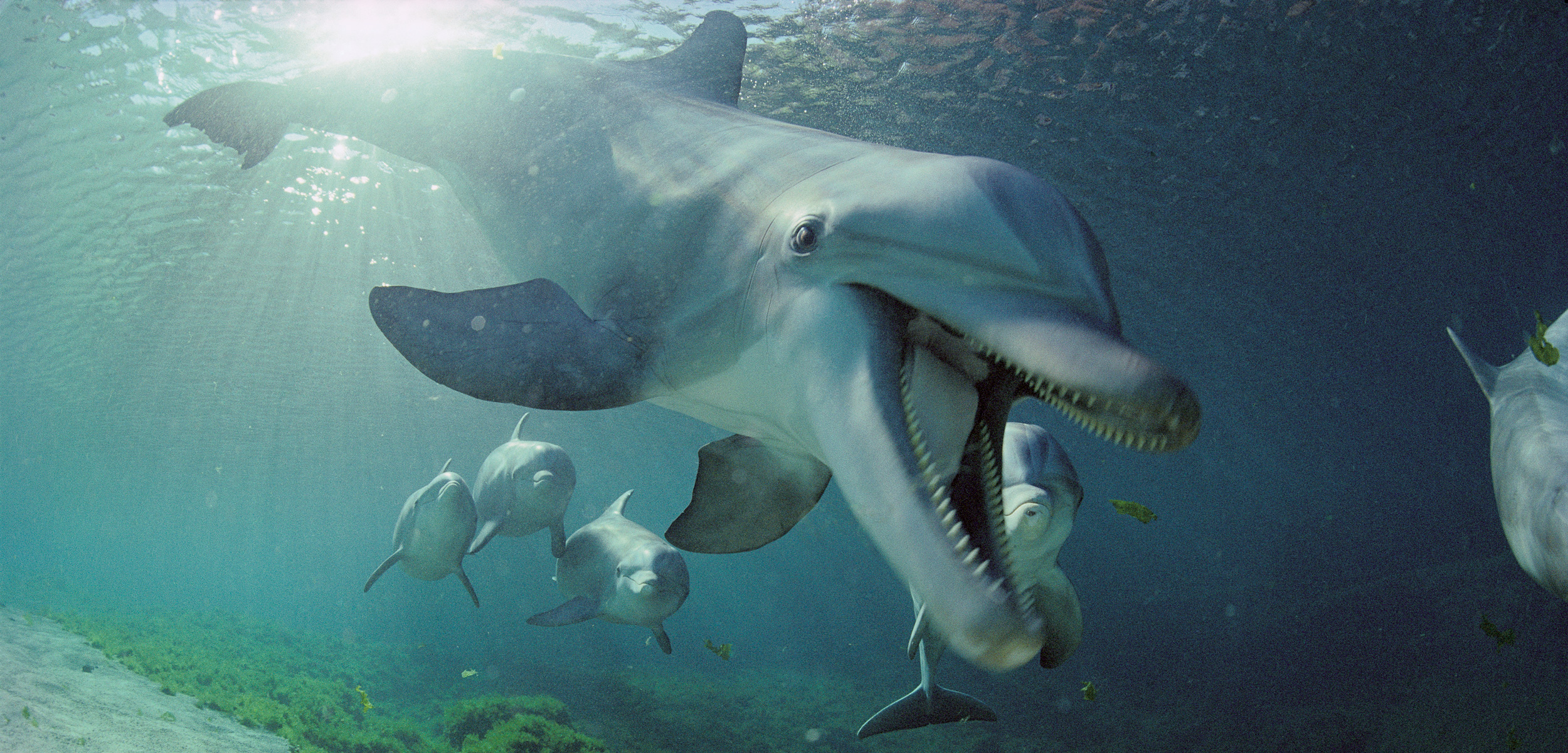Dolphins Master Decapitation
In the Gulf of Mexico, dolphins have learned a deadly new trick.
Article body copy
Biologist Errol Ronje was on a boat, on a routine research trip along the coast of Mississippi, when he came across a trail of severed heads.
“We started to see little white things bobbing in the water,” he says. The melon-sized masses of flesh were marine catfish heads. “And they were still, for lack of a better word, alive.”
The eyes of the dead fish were still moving; their pectoral fins were twitching. Clearly, they’d been decapitated very recently.
Ronje, on contract with the US National Oceanic and Atmospheric Administration, had been trailing a local pod of dolphins. He knew from previous research that dolphins usually don’t eat catfish. The cetaceans swallow prey whole, but catfish have three large, stiff spines that stick out from their heads making them difficult to eat. In fact, several dolphins in the region had been found dead, with catfish lodged in their throats.
But the dolphins were the only suspects around, and the severed catfish heads were floating in their wake, Ronje says.

The spiny, unpalatable head of a catfish bobs in the water after a dolphin has snacked on the remainder. Photo courtesy of PLOS ONE
As Ronje’s research went on to unveil, not only were the dolphins responsible for the massacre, but scientists soon spotted other dolphin groups along the coast of Mississippi and northern Florida decapitating catfish. The behavior seemed to be associated with a few individual dolphins that traveled between the groups.
Dolphins deliberately decapitating catfish is a largely new behavior for these cetacean predators. Ronje says the only other record of this behavior comes from a passing mention in a scientific paper in the 1940s, when a different population of dolphins in the Gulf of Mexico was seen decapitating catfish near Texas.
Ronje has seen dolphins chasing catfish underwater and swimming with the fish in their mouths, but he’s yet to capture the exact moment of decapitation—probably because they do it underwater.
The novel technique seems to be another example of dolphins learning to get around the challenges of potentially hazardous prey.
In Western Australia, for example, a population of dolphins has learned to violently toss octopuses into the air to kill them. If they didn’t, the eight-limbed prey’s suckers could adhere to the inside of the dolphins’ throats and choke them.
Lars Bejder, a marine biologist at Murdoch University in Western Australia who has studied the octopus-tossing technique, says the Gulf dolphins are demonstrating adaptability. The next step is to study how the dolphins are learning this technique.
Ronje hopes to answer this question in the next few years. Still, our understanding of dolphin ecology has changed. “You could say catfish are more important to dolphins than we realized.”

